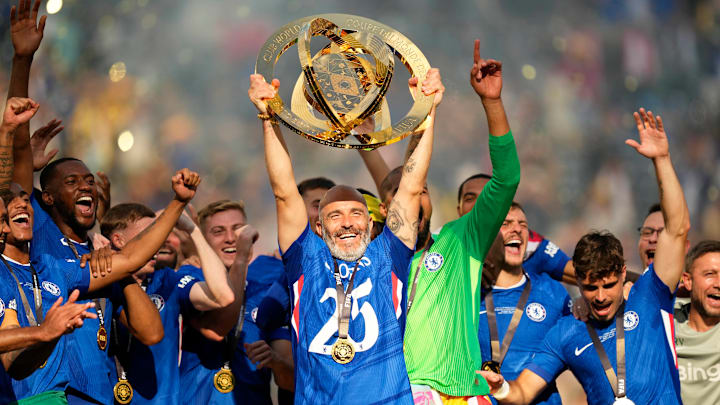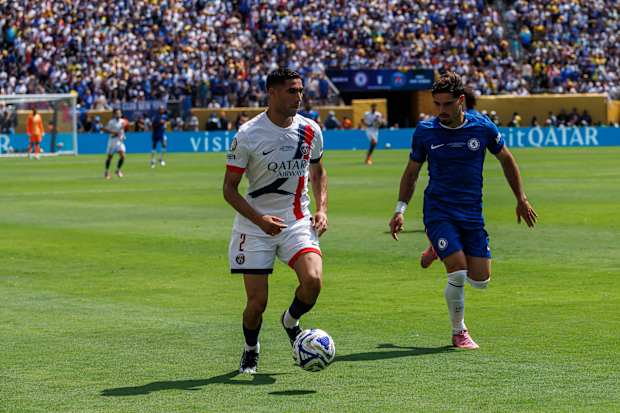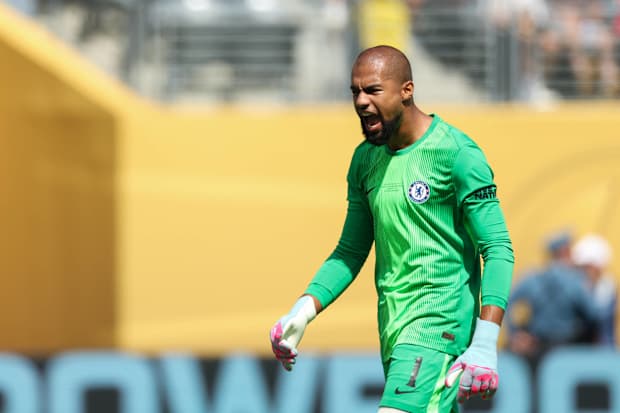Enzo Maresca's Tactical Genius Leads Chelsea to Club World Cup Glory

The term 'tactical masterclass' is frequently thrown around without much evidence to support it, but when an underdog team delivers a performance like Chelsea's on Sunday evening to claim the Club World Cup, one must acknowledge the influence from the touchline.
Paris Saint-Germain had been touted as a potentially era-defining squad leading up to their clash with Enzo Maresca's Chelsea. The Parisians were pursuing their fifth trophy of the 2024-25 campaign in New Jersey and had the opportunity to become the inaugural team to achieve the 'septet'.
Nevertheless, this ambition was crushed by the Blues at MetLife Stadium, as Maresca's squad delivered a commanding performance throughout the entire match to defeat the formidable Parisians 3-0.
Without question, this represented a 'masterclass' from Maresca and his players. While Chelsea's victory cannot be attributed entirely to the manager, the Italian, who concluded his debut campaign in west London with two trophies, was instrumental in the Blues' unexpected success.
These were three crucial elements behind Chelsea's supremacy over PSG in the Club World Cup final.
Pedro Neto's Defensive Work

Pedro Neto delivered an outstanding tournament performance, entering the final having scored three goals. The winger provided tremendous energy across various positions and was deployed on the left wing on Sunday.
Although Neto served as a valuable transition outlet, Chelsea's most effective possession play occurred on the opposite flank. Consequently, Neto distinguished himself through his defensive commitment.
The Portuguese player faced the challenging assignment of neutralizing Achraf Hakimi at MetLife Stadium. The Moroccan talent possesses explosive pace in straight lines, but PSG's fluid system means he doesn't simply patrol the sideline. Hakimi enjoys rotating with teammates ahead of him and cutting inside as well.
Neto wasn't required to track the right-back centrally, but effectively handing him off to a center-back or midfielder proved vital to his defensive contribution. The winger frequently operated in the left-back area, and his acceleration enabled him to match Hakimi's pace when the PSG player attempted to break through.
Luis Enrique's team possesses multiple attacking threats, and Hakimi's forward runs from deep positions represent a significant danger. However, this attacking avenue was completely neutralized by Neto's exceptional defensive performance.
Cole Palmer in His Favourite Zone

Palmer's Club World Cup campaign took time to ignite, as Maresca experimented with the Englishman's positioning with mixed results.
Correctly identifying player strengths is fundamental to successful management, and the Chelsea boss has faced criticism for misusing some of the Blues' attacking talents. However, regarding Palmer on Sunday, Maresca executed perfectly.
Officially, Palmer was positioned on the right side of a 4-2-3-1 formation, but Malo Gusto's overlapping runs from right-back enabled Chelsea's key player to move centrally and operate from the half-space. The Blues established a box formation around PSG's midfield trio, with Maresca recognizing the areas beside Vitinha as crucial when his team sought to transition offensively.
"They have three midfielders. Two of them were charged for Reece and for Moi [Caicedo], and Vitinha was charged for Enzo. Analysing them we saw that was a good opportunity to exploit that space," he explained afterward (via Chelsea's official website).
"We used Cole [Palmer] and Malo [Gusto] on that side to create a little bit of an overload. It was just one game plan, we try to use different game plans. We try to help the players to be in the position where they can give everything."
The strategy proved highly effective, with Palmer consistently receiving the ball in advantageous positions throughout the opening period. The England star sent an early opportunity wide, but converted his next two attempts from nearly identical locations. Palmer then assisted Chelsea's third goal, having dropped deep to the halfway line and capitalizing on the space available to him. He played João Pedro through behind Lucas Beraldo, and the Brazilian finished brilliantly over Donnarumma.
Match decided.
Robert Sánchez's Distribution

PSG struggled on their right side and were exposed down the opposite wing. Chelsea relentlessly targeted the European champions' left flank, particularly during the first half as they established a commanding 3-0 advantage at halftime.
Their display didn't feature extended build-up play, but bypassing PSG's pressure through goalkeeper Robert Sánchez's long-range passing proved tactically astute. They seldom risked becoming entangled in the Parisian pressing trap, instead forcing PSG defenders to retreat and defend while running toward Donnarumma's goal.
The goalkeeper remained decisive throughout, avoiding hesitation that could have led to costly errors. Although only nine of his 26 long passes reached their intended targets, accuracy wasn't the primary objective. Furthermore, his pass toward Gusto, which initiated Chelsea's opening goal, was first contacted by Mendes, who was outmuscled by the Frenchman. The Blues not only aimed to exploit the space behind Mendes during his forward ventures but also believed they could overpower the left-back aerially.
Sánchez excelled in virtually every aspect on Sunday, with his long-range distribution being central to Chelsea's direct approach that yielded results.
